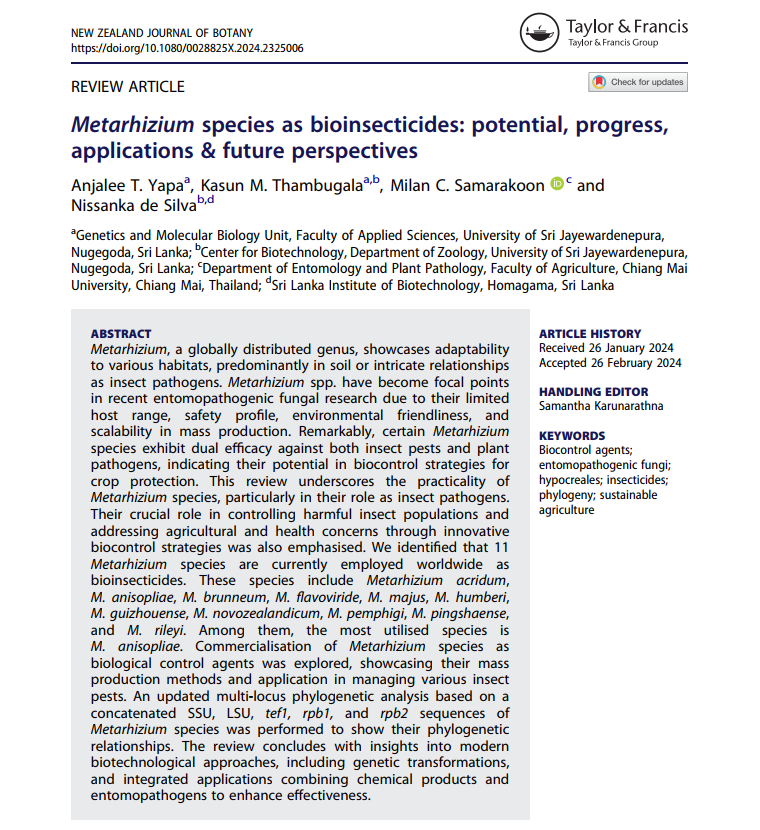Metarhizium, a globally distributed genus, showcases adaptability to various habitats, predominantly in soil or intricate relationships as insect pathogens. Metarhizium spp. have become focal points in recent entomopathogenic fungal research due to their limited host range, safety profile, environmental friendliness, and scalability in mass production. Remarkably, certain Metarhizium species exhibit dual efficacy against both insect pests and plant pathogens, indicating their potential in biocontrol strategies for crop protection. This review underscores the practicality of Metarhizium species, particularly in their role as insect pathogens. Their crucial role in controlling harmful insect populations and addressing agricultural and health concerns through innovative biocontrol strategies was also emphasised. We identified that 11 Metarhizium species are currently employed worldwide as bioinsecticides. These species include Metarhizium acridum, M. anisopliae, M. brunneum, M. flavoviride, M. majus, M. humberi, M. guizhouense, M. novozealandicum, M. pemphigi, M. pingshaense, and M. rileyi. Among them, the most utilised species is M. anisopliae. Commercialisation of Metarhizium species as biological control agents was explored, showcasing their mass production methods and application in managing various insect pests. An updated multi-locus phylogenetic analysis based on a concatenated SSU, LSU, tef1, rpb1, and rpb2 sequences of Metarhizium species was performed to show their phylogenetic relationships. The review concludes with insights into modern biotechnological approaches, including genetic transformations, and integrated applications combining chemical products and entomopathogens to enhance effectiveness.
https://www.tandfonline.com/doi/full/10.1080/0028825X.2024.2325006


